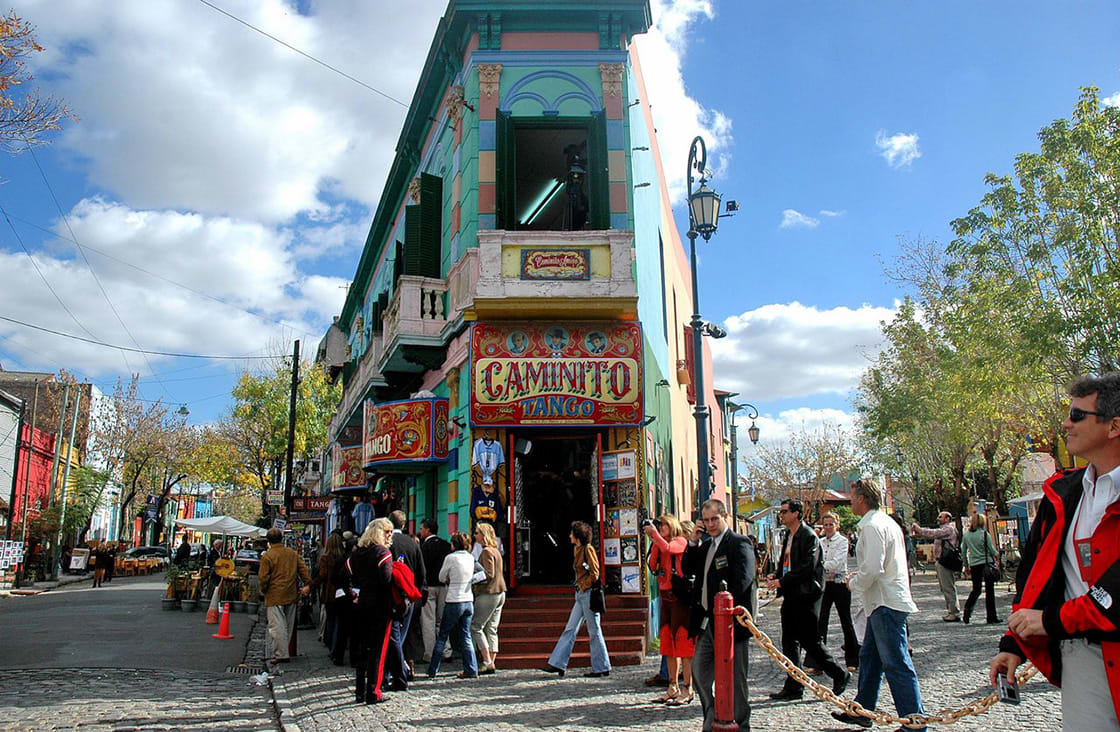
Argentina’s diverse geography encompasses everything from exciting cities to charming villages, harsh deserts, humid jungles, wine country, gorgeous coastlines, and soaring mountain peaks. Here are ten of Argentina’s top tourist attractions.
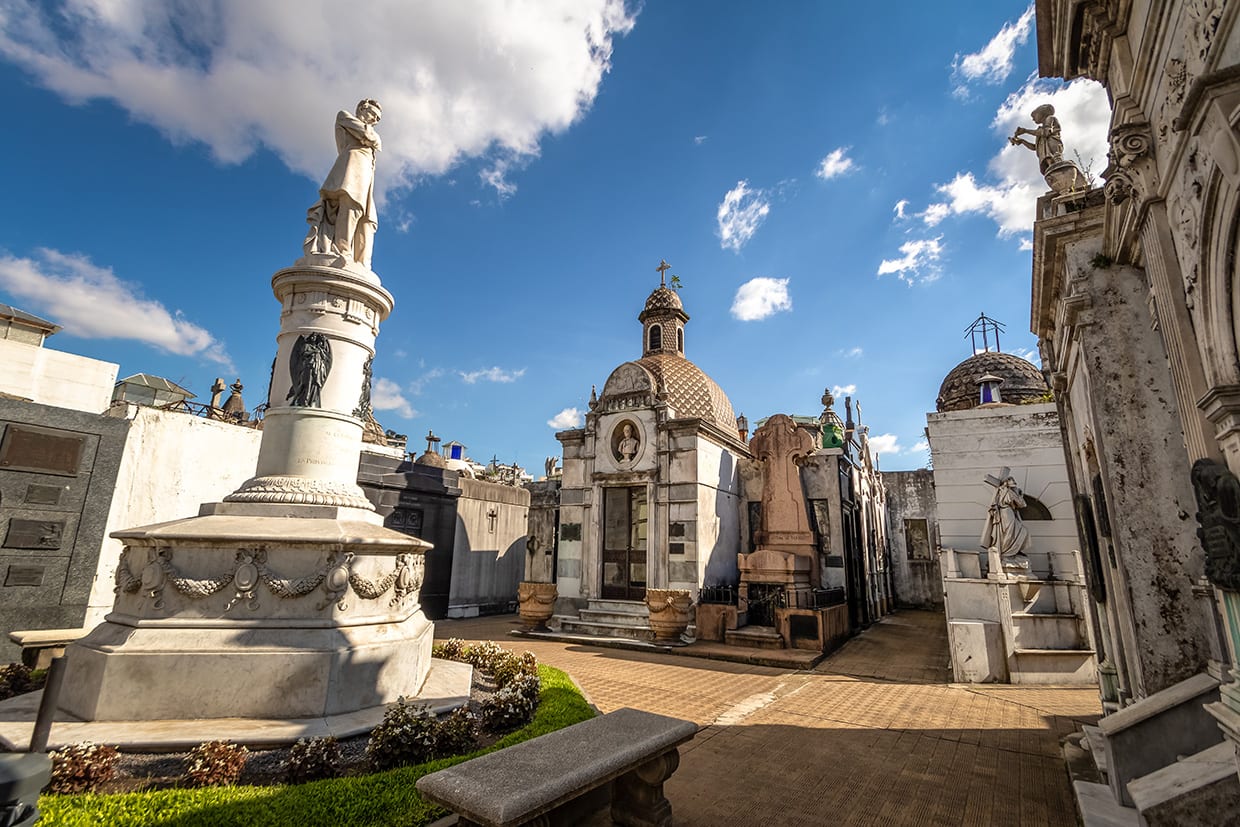
Recoleta Cemetery, in the neighborhood of the same name, belonged to the Recollect monks
Argentina’s bustling capital city, Buenos Aires, offers plenty of tourist attractions, one of which is Recoleta Cemetery, located at the top of the hilly Plaza Francia. This ‘City of the Dead’ dates back to the early 18th century and contains more than 6400 graves, vaults, and mausoleums. Architectural features abound, with numerous statues, Doric columns, Greek temples, and miniature Baroque cathedrals, but what makes it especially interesting are the names, professions, and stories of those who have been laid to rest here.
The tombs include those of Eva Peron, Argentinian presidents and patriots, Nobel Prize winners, medical pioneers, aviation pioneers, philosophers, composers and poets, artists, authors and singers, racing car drivers, sportsmen, actors, the founder of the Argentine Navy, a granddaughter of Napoleon, war heroes, villains, and virtually every Argentinian figure of political or cultural significance from the past two centuries. There are city blocks, stone streets, alleys, and even little plazas. Legend has it that the cats living among the crypts are the guardians of the souls.
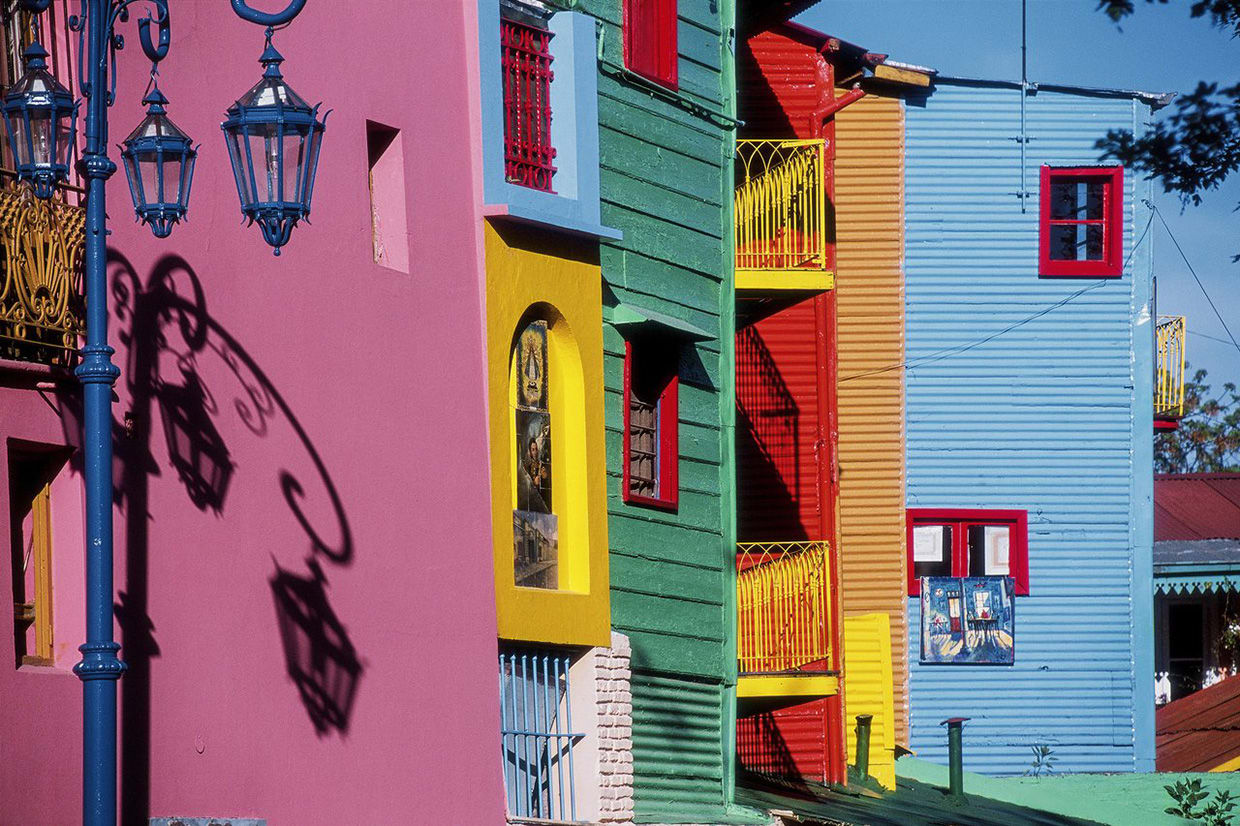
Caminito is a street museum and a traditional alley, located in La Boca
Located in the La Boca neighborhood, Caminito is Buenos Aires’ most colorful and most photographed area. It is home to the quirky Caminito Street Museum, a splendid pedestrian zone and open-air museum popular for its brightly painted houses, shops, cafes amusing statues, music, and tango dancers in the streets. Celebrating Italian immigrants who arrived in Argentina in the 1800s, this foreign influence is alive and well in this thriving area. Artists sell paintings, music fills the air and performers dance the tango as immigrants did centuries ago.
The place acquired cultural significance because it inspired the music for the famous tango “Caminito” (1926), composed by Juan de Dios Filiberto. Caminito owes its restoration to artist Benito Quinquela Martín, who was known for painting the activity, vigor, and roughness of daily life in the port of La Boca. In the 1950s, Quinquela Martín began painting the buildings of Caminito in vibrant colors and eventually built a small stage at the end of the walk.
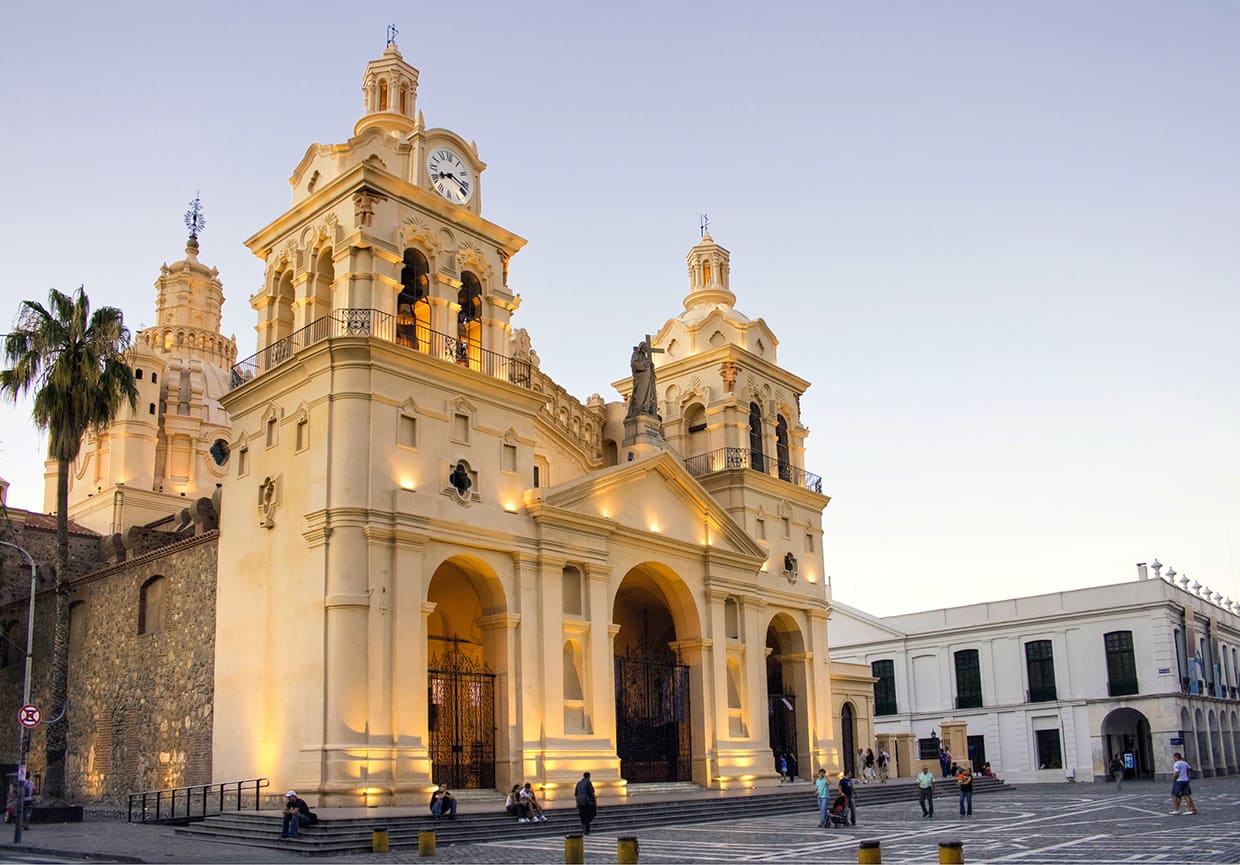
The Cathedral of Córdoba is the central church of the Roman Catholic Archdiocese of Córdoba, and also the oldest church in continuous service in Argentina
The mosque-cathedral is a magnificent monument to the two religions and cultures that have shaped Andalusia: Islam and Christianity. The building began life as a mosque in the 8th century after Córdoba fell under Moorish rule. Prior to its construction, the land is believed to have been home to a Christian church. The mosque held a place of great importance amongst the Islamic community of al-Andalus for three centuries and was seen as the heart and central focus of the city. This period lasted until 1236 when the city of Córdoba became under Christian rule once again.
Instead of being torn down, the mosque was converted into a Catholic church. Muslims were forbidden to pray inside and despite campaigns from Muslims across Spain up until the present time, it remains a place of worship for Catholics only. The mosque’s most-photographed aspect is its vast main hall, where sunlight and shadows create unusual effects, contemplating the troubled history of this great building as you wander through the more-than-850 double-arched columns.
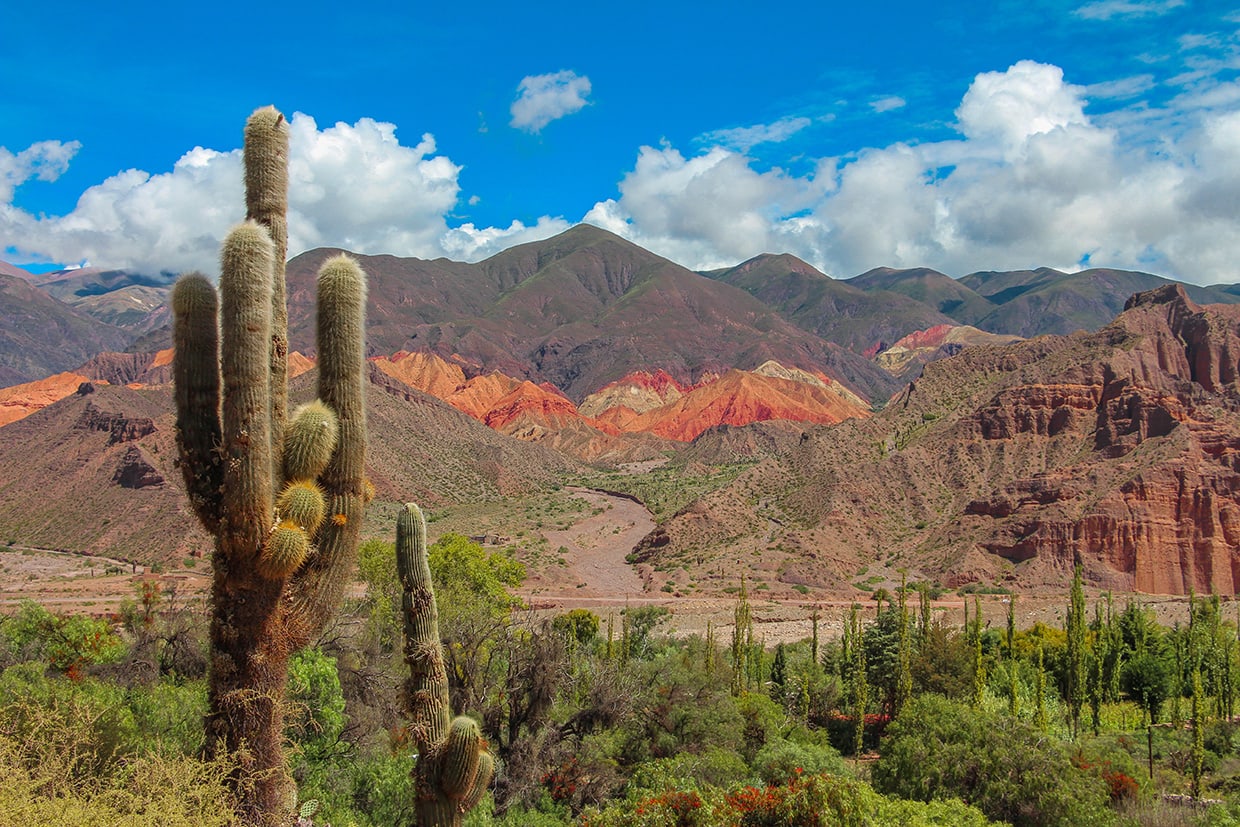
Quebrada de Humahuaca is a narrow mountain valley in northern Argentina. It’s known for its dramatic rock formations and hills, and its indigenous Quechuan villages
Located in northwest Argentina between the Andes and the fertile Valles Templados, Quebrada de Humahuaca is one of the most spectacular Argentina tourist attractions, with a rich blend of astonishing natural wonders and pre-Incan cultural heritage. This unearthly valley has a desert-like atmosphere that’s defined by cacti, lamas, rugged mountains, and colorful sandstone escarpments. Here, you will travel on ancient Incan trade routes past settlements that have been populated for approximately 10,000 years. El Hornocal or ‘Mountain of 14 colors’ showcases bands of multicolored limestone formations on an enormous scale, more than 16,000 feet above sea level.
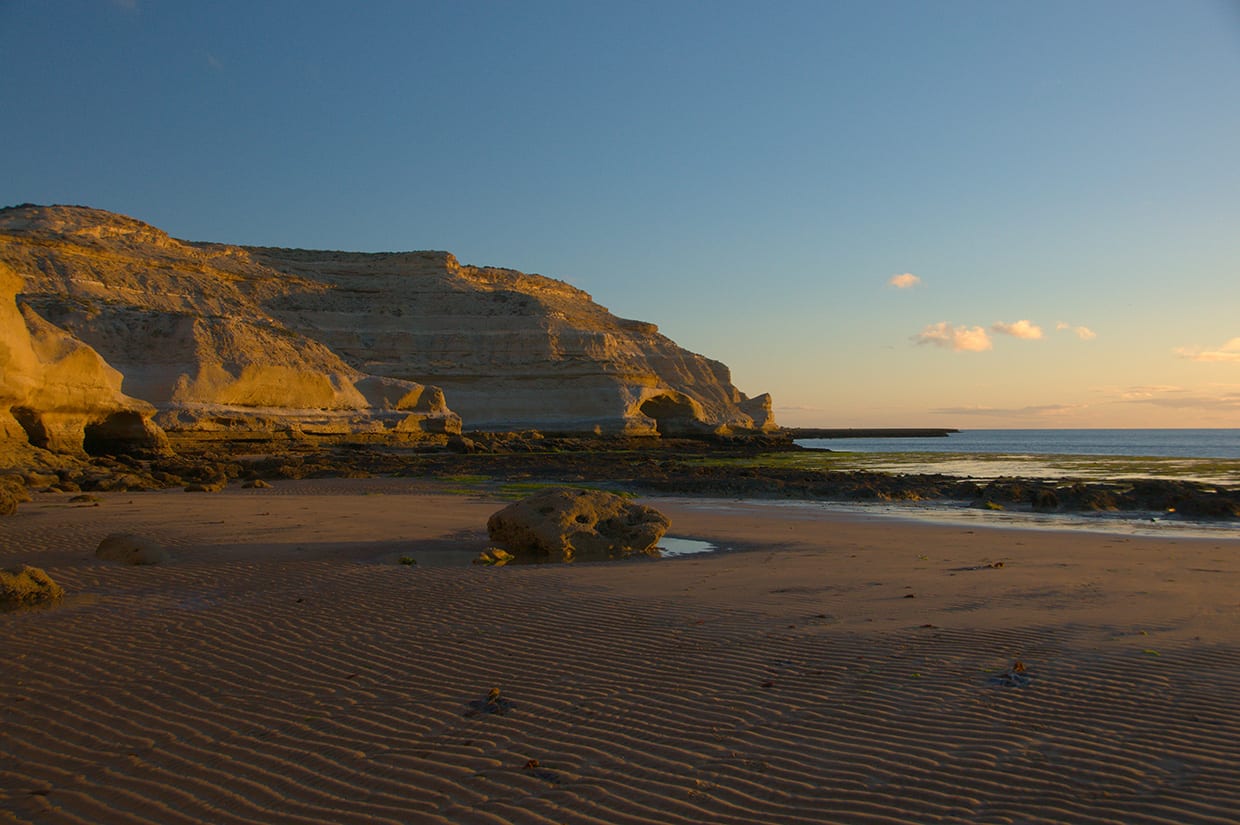
Península Valdés is a Patagonian nature reserve . It’s known for the marine animals inhabiting its surrounding beaches and waters, such as whales, sea lions, and elephant seals
This remote peninsula is an exceptional place to observe an extraordinary variety of marine mammals. Depending on the time of year, it attracts a great number of penguins, sea lions, seals, and orcas. Whales can be seen in the waters between May and December. You may also spot foxes, guanacos, rheas, maras, shorebirds, and other endemic species on the sparsely populated landmass. A guided tour of the reserve is a must. Learn more about the environment of this beautiful coast at the Natural Science and Oceanographic Museum, which features displays of Patagonian flora and fauna, including a whale skeleton and a fascinating exhibit about giant squids.

One of the most important tourist attractions in the Argentinian Patagonia
This immense, nearly-19-mile-long glacier is located just outside the town of El Calafate in the heart of Patagonia in the Los Glaciares National Park. It is one of the most important Argentina attractions due to its size and accessibility. It is less than two hours by bus from El Calafate to the glacier’s large visitor center and from here just a short walk to the glacier. If you want to climb the glacier, ice trekking tours are available that range from an hour’s walk over the ice formation to longer five-hour excursions. You can even board a helicopter flight and walk across it while enjoying a glass of whiskey with natural ice cubes.

A Unique And Beautiful Scenery; A Blue River And Fitz Roy Mountain
Straddling the Chilean border, the 11,171 ft Monte Fitz Roy is the tallest mountain in Argentine Patagonia. This granite spire is surrounded by glacial lakes and dramatic ice fields. The rugged terrain and sheer rock faces are revered by mountain climbers for the extreme challenge and by photographers for the incredible beauty. The Fitz Roy day hike is doable for the moderately fit.

Panorama Of The Most Beautiful Iguazu Waterfall
Iguazú Falls is among the largest and most majestic waterfalls in the world and truly one of the planet’s great natural wonders. The falls are surrounded by the tropical jungle of Argentina and Brazil, providing a breathtaking scene that makes Niagara Falls seem like a drop in a pond. You can get quite close thanks to a network of easily accessible walkways and viewing platforms designed to provide the best possible views.

Cerro Campanario View Point Near Bariloche In Nahuel Huapi National Park
For exploring the mountainous region of Bariloche, the Route of the Seven Lakes is a great option. This driving circuit traces a winding path through an epic landscape of sweeping tundras, multi-hued forests, towering peaks, charming towns, a waterfall, and tranquil lakes. The 67-mile road trip is touted as one of the most scenic drives in Argentina, and also offers opportunities for short walks to admire waterfalls or hikes in the foothills of the Andes Mountains.
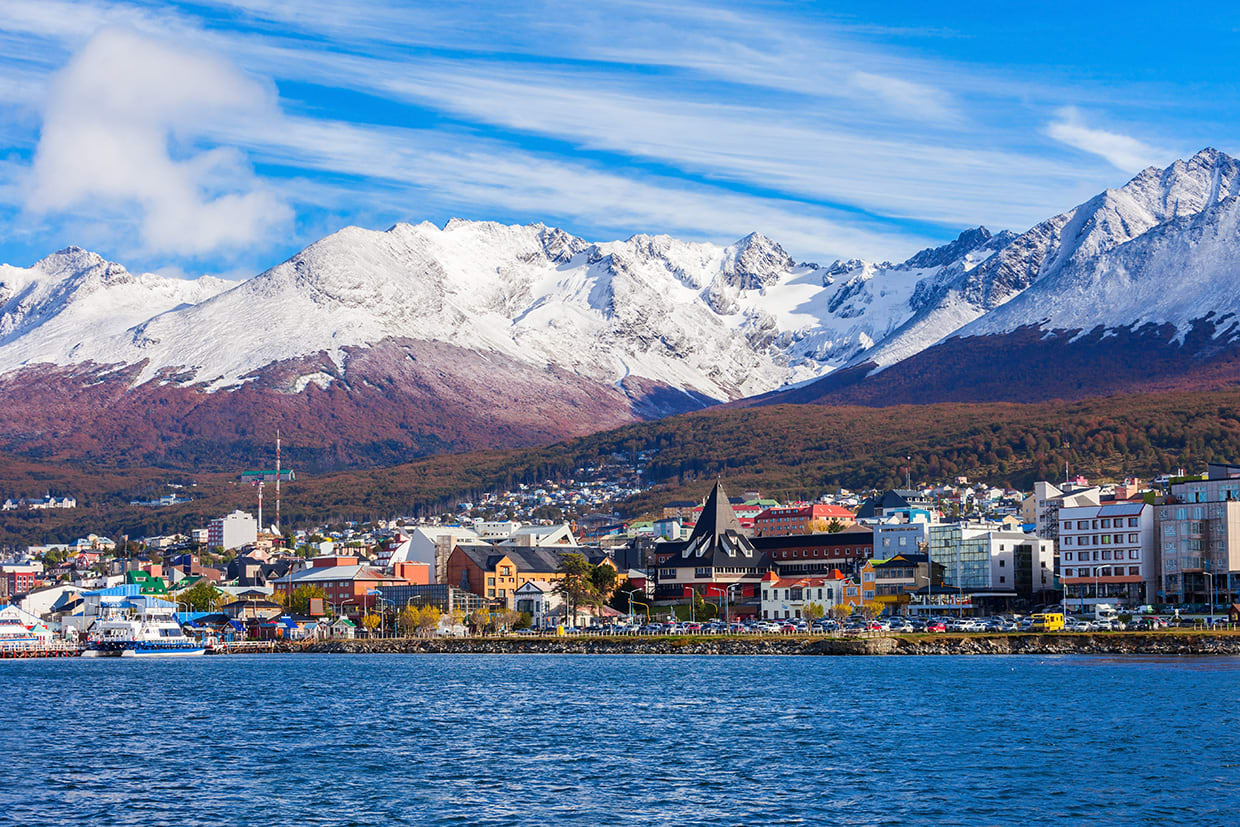
Ushuaia is located on the Tierra del Fuego archipelago the southernmost tip of South America, nicknamed the “End of the World”
Established as a penal colony in the early 20th century and now a popular jumping-off point for trips to Antarctica or around Cape Horn, Ushuaia claims the title of the world’s southernmost city and is located in a wide bay on the southern coast of Isla Grande de Tierra on the Beagle Channel, between the Martial Range and the end of the world. Popular places to visit include the San Juan de Salvamento Lighthouse − also known as the End of the World Lighthouse − built in 1884 on the Isla de Los Estados, and the End of the World Museum.
Here, you’ll find exhibits documenting the region’s natural history, aboriginal life, and early penal colonies. The Maritime Museum of Ushuaia, housed in the town’s notorious former military prison, is worth visiting for its many maritime artifacts and scale models of famous ships such as Darwin’s ‘Beagle’.
While Rainforest Cruises aim to provide accurate and up-to-date information, we make no representations as to the accuracy or completeness of any information herein or found by following any link on this site. Rainforest Cruises cannot and will not accept responsibility for any omissions or inaccuracies, or for any consequences arising therefrom, including any losses, injuries, or damages resulting from the display or use of this information.




